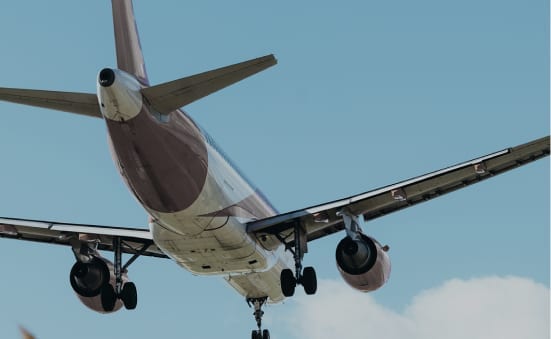Air Traffic Control (ATC)
ATC is a service provided to promote the safe, orderly and expeditious flow of air traffic. Safety is basically to prevent collisions between aircraft or with obstacles/obstructions whether in the air or on the ground; assist aircraft in avoiding hazardous weather; ensure that aircraft do not operate in airspace where operations are prohibited; and assist aircraft in distress. An orderly and fast flow guarantees the efficiency of the aircraft operation along the route chosen by the operator. It is provided through the equitable allocation of system resources to individual flights.
| An air traffic controller is responsible for ensuring the safe and efficient movement of aircraft in the airspace. They work in air traffic control towers and air traffic control centres, monitoring and directing the flow of air traffic. Their primary objective is to maintain safe distances between aircraft and provide guidance to pilots to prevent collisions or conflicts.
Air traffic controllers have a crucial role in managing the movement of aircraft during takeoff, landing, and en-route phases of flight. They use radar systems, communication equipment, and advanced computer systems to track aircraft positions, provide clearances for flight paths, and issue instructions to pilots. They must possess excellent situational awareness, decision-making skills, and the ability to remain calm under high-pressure situations. Air traffic controllers must also have a thorough understanding of aviation regulations and procedures, as they are responsible for enforcing airspace rules and ensuring compliance with established protocols. Their work is essential for maintaining the safety and efficiency of air travel, contributing to the overall functioning of the aviation industry. |
Air traffic controllers are stationed at the air traffic control tower in airports or the air traffic control centres located in KLIA, Kuching and Kota Kinabalu.
Keeping radio and/or radar contact with aircraft;
directing the movement of aircraft in flight or at an airport;
instructing aircraft to climb or descend and allocating final cruising level;
providing information to aircraft on weather conditions;
making sure the minimum distances are maintained between airplanes;
handling unexpected events, emergencies and unscheduled traffic.
There are three types of Air Traffic Controllers:
Area controllers – they are based at the air traffic control centres. They direct airplanes in flight and give them the most efficient route to their destinations. By using radar and computer technology, they can track the exact position of each aircraft. They also use radar to keep traffic separated in the air.
Approach controllers –They manage the airspace around airports and guide aircraft during the arrival and departure phases. Approach controllers use radar systems to track aircraft, provide vectors to pilots for approach and departure, and maintain safe separation between aircraft. They coordinate with tower controllers to ensure a smooth transition from the en-route phase to the airport vicinity.
Aerodrome controllers – work in control towers at airports and are responsible for the safe movement of aircraft on the ground and in the immediate vicinity of the airport. They coordinate takeoffs, landings, and ground movements, ensuring proper spacing between aircraft and vehicles on the runways and taxiways. Tower controllers also provide clearances to pilots for departures and arrivals and monitor weather conditions that may affect aircraft operations.
Air traffic control is a 24-hour operation, which includes weekends and also public holidays. The controllers work on shift hours, with one shift comprising of three working days, one resting day and one day off. The working days are divided into morning shift on the first day, followed by afternoon shift and night shift. The work of Air Traffic Controllers involves manning a workstation, gathering and interpreting data using computers and radar displays as well as communicating with pilots by the use of radio equipment.
- Excellent communication skills
- Working well under pressure.
- Having the capacity to act quickly and decisively and having to be goal-focused
- The capacity to navigate a theoretically-based course and then apply it in a real-world setting.
- Ability to visualize three-dimensional object moving.
- A team player.
- Comply to the all requirements established by the current Service Scheme for Air Traffic Controller (Skim Perkhidmatan Pegawai Kawalan Trafik Udara)
Diploma recognized by the government and equivalent.
Bachelor’s degree recognized by the government and equivalent.
* reference: Service Scheme for Air Traffic Controller (Skim Perkhidmatan Pegawai Kawalan Trafik Udara)
If you would like to apply for this position, you can do so in the following ways:
Apply: https://www.caam.gov.my/resources/career/
Before being contacted for an interview, qualified candidates must pass the test and satisfy all criteria required by CAAM and related service scheme.
Enrol in a training program at the Academy of Civil Aviation Malaysia (MAVA) that can last up to sixty-six weeks.
To receive a live rating, participate in on-the-job training (OJT).
The induction module covers meteorology, aircraft operations, air navigations, navigation aids, communication, aviation laws and publications. The modules cover the basics of hands-on air traffic control in aerodrome or area procedural environment. It teaches trainees how to keep aircraft separated without using radar.
The real fun begins after leaving the Academy of Civil Aviation. ‘On-the-job’ training is carried out at a regional air traffic control tower or a radar centre under the supervision of an experienced controller. At this stage, you will move from ‘student’ to ‘trainee’ and will train in the operational environment, dealing with live traffic.
Initially, you’ll have the On Job Training Instructor with you all the time. As training progresses, the instructor will gradually step back, allowing you to make your own decisions and control the traffic as if you were on your own.
When you’ve attained sufficient experience and have shown that you can deal consistently with all traffic situations and complexities, you’ll be recommended for a final proficiency assessment. On successful completion of this, you’ll be issued your Air Traffic Control License and Rating.
“Live Rating” is an international license that gives you recognition to carry out the job of air traffic control. Malaysia Air Traffic Controller license is issued by the Civil Aviation Authority of Malaysia (CAAM) and is recognized by International Civil Aviation Organisation (ICAO). This means you have obtained a qualification which can be used in many countries overseas.
Assistant Air Traffic Controller Officer Grade A29
Minimum salary of 1,943.57 for Diploma recognized by the government and equivalent.
Air Traffic Controller Officer Grade A41
Minimum salary of RM 2,325.00 for Bachelor’s degree recognized by the government and equivalent.
* reference: Service Scheme for Air Traffic Controller
Professional Allowance
A licenced ATCO shall receive a professional incentive allowance in addition to the salary and various government allowances that are paid on a monthly basis. To qualify as a licenced ATCO, he/she needs to pass a Medical Assessment Class Ill and an English Language Proficiency Test Level 4 or above.
- a) Incentive (Licensed) Allowance Air Traffic Control
| Air Traffic Controller Grade | Incentive (RM) |
| Assistant Air Traffic Controller Officer Grade A29 | RM 250.00 |
| Assistant Air Traffic Controller Officer Grade A36 | RM 350.00 |
| Assistant Air Traffic Controller Officer Grade A38 | RM 400.00 |
| Assistant Air Traffic Controller Officer Grade A40 | RM 400.00 |
| Air Traffic Controller Officer Grade A41 | RM 600.00 |
| Air Traffic Controller Officer Grade A44 | RM 700.00 |
| Air Traffic Controller Officer Grade A48 | RM 900.00 |
| Air Traffic Controller Officer Grade A52 | RM 1000.00 |
| Air Traffic Controller Officer Grade A54 | RM 1200.00 |
In addition, a licensed ATCO who performs Air Traffic Control functions and hold a current Air Traffic Control Ratings shall receive the following allowance according to the rating held:
- b) Rating Allowance
| Rating | Allowance (RM) |
| Aerodrome Control | RM 200.00 |
| Approach Control (Procedural) | RM 350.00 |
| Area Control (Procedural) | RM 450.00 |
| Area Control (Radar) | RM 600.00 |
| Approach Control (Radar) | RM 750.00 |
There are some sites/blogs that allow you to listen to pilot-controller communication. If you’re interested, you can do a web search with “live ATC” as the criteria.
For further information concerning a career as Air Traffic Controllers, please contact
Air Traffic Management Sector
Civil Aviation Authority of Malaysia
Level 4, Block Podium B,
No. 27, Persiaran Perdana
Presint 4, 62618
Putrajaya



